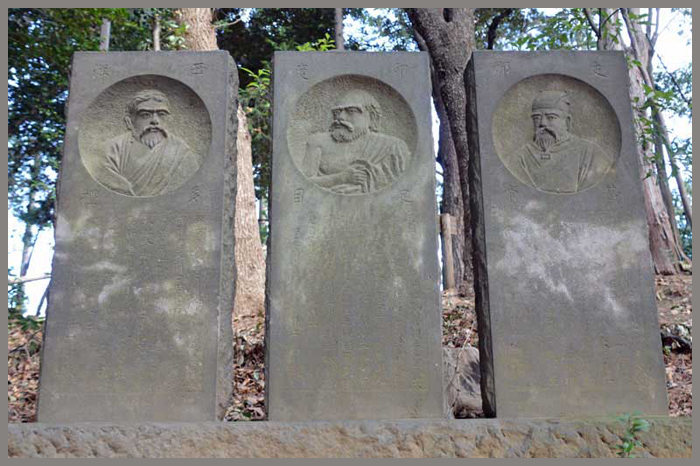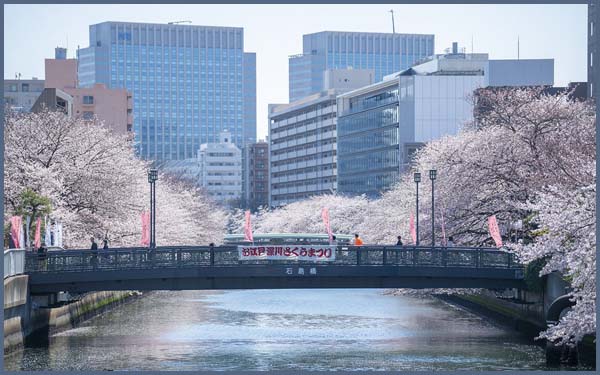. . Pilgrimages to Fudo Temples 不動明王巡礼 . .
. Adachi ku 足立区 Adachi ward Tokyo .
::::::::::::::::::::::::::::::::::::::::::::::::::::::::::::::::::::::::::::::::::::::::::::::::::::::::::::::::::::::::::::::::::::::::::::::::::::::::::::::::::::::::::::::
backup from . Adachi 100 Fudo Temples 足立百不動尊霊場 Pilgrimage .
::::::::::::::::::::::::::::::::::::::::::::::::::::::::::::::::::::::::::::::::::::::::::::::::::::::::::::::::::::::::::::::::::::::::::::::::::::::::::::::::::::::::::::::
Adachi 100 Fudo Temples 足立百不動尊霊場 Pilgrimage

- reference source : hanaetabi.fc2web.com/hudou ... -
::::::::::::::::::::::::::::::::::::::::::::::::::::::::::::::::::::::::::::::::::::::::::::::::::::::::::::::::::::::::::::::::::::::::::::::::::::::::::::::::::::::::::::::
01 玉林院 Gyokurin-In (さいたま市緑区中尾2343)廃寺。不動堂 Fudo Hall - Saitama city
02 明音院(さいたま市南区大谷口3025)廃寺 - abandoned 。 Myoon-In
03 西林院(さいたま市南区大谷口3133)廃寺 - abandoned 。 Sairin-In
04 寶珠山吉祥寺(さいたま市緑区中尾1410) Kichijo-Ji
05 三光院(さいたま市緑区東浦和8-10)廃寺 - abandoned 。 Sanko-In
06 玉泉院(さいたま市緑区大間木296-2) Gyokusen-In
07 金剛寺 Kongo-Ji (さいたま市緑区中尾238)廃寺。現不動ヶ谷不動堂 Fudo Hall
08 光善院 Kozen-In (さいたま市浦和区元町1-231-1)廃寺。現皇山不動堂 Fudo Hall (浦和区木崎2-4-13)
09 観音寺 Kanon-Ji (さいたま市浦和区北浦和3-15-22)廃寺 - abandoned 。現廓信寺
10 観音寺(さいたま市大宮区高鼻町2-262)廃寺。現満福寺(さいたま市北区日進町2-1003)
. 10 観音寺 Kannon-Ji .
11 景元寺 Keigen-Ji (さいたま市大宮区北袋町2-379)
12 正福寺 Shofuku-Ji (さいたま市浦和区上木崎7-19-1)
13 西林山長覺院 Chogaku-In (さいたま市浦和区領家4-20-3)
14 光珠山東泉寺 Tosen-Ji (さいたま市浦和区瀬ヶ崎2-15-3)
15 不動堂 Fudo Hall (さいたま市緑区三室601-3)現報恩寺 Hoon-Ji
16 瑠璃光山東漸寺 Tozen-Ji (さいたま市緑区馬場1-3-2)
17 大智山文殊寺 Monju-Ji (さいたま市緑区三室1956)
18 不動堂 Fudo Hall (さいたま市緑区芝原2-1-6)
19 慈了山清泰寺 Seitai-Ji (さいたま市緑区東浦和5-18-9)
20 不動堂 Fudo Hall (さいたま市緑区大間木1906八丁観音堂内)
21 醫王山薬王寺 Yakuo-Ji (川口市木曽呂934) - Kawaguchi city
22 青龍山西光院 Seiko-In (川口市戸塚2-6-29)
23 平沼弁天坊 Hiranuma Benten Bo (川口市東川口5-21-19)平沼町会会館
24 延壽院 Enju-In (川口市東川口1-10-15)廃寺 - abandoned 。現一本木町会会館
25 長久山真乗院 Shinjo-In (川口市石神1253)
26 寶泉院 Hosen-In (川口市神戸303-3)廃寺 - abandoned 。現神戸町会会館
27 長源寺 Chogen-Ji (川口市道合1221)廃寺 - abandoned 。現安養山大徳寺
28 戎光山多寶院 Taho-In (川口市新井宿157)
29 箱崎山地蔵院Jizo-In (川口市桜町5-5-39)
. 29 地蔵院 Jizo-In .
30 神明院 Shinmei-In (川口市安行領家377)廃寺。不動尊は宝厳院慈林寺
宝厳院慈林寺 Jirin-Ji (川口市安行慈林954)
源性寺 Gensho-Ji (川口市安行本町3-7-8)廃寺 - abandoned 。現本町三丁目自冶会館
瑠璃山薬林寺 Yakurin-Ji (川口市朝日1-4-33)
東明院 Tomei-In (川口市船戸1-29)廃寺 - abandoned 。現平等山善光寺
薬王山最勝院 Saisho-In (川口市飯塚1-15-24)
無動山観音寺 Kannon-Ji (東京都北区浮間4-9-2) - Tokyo, Kita ward
大教院 Daikyo-In (東京都北区浮間4-9-2)廃寺 - abandoned 。現無動山観音寺
大光寺 Daiko-Ji (川口市南町1-6-2)廃寺 - abandoned 。不動尊は珍珠山吉祥院
39 東福院 Tofuku-In (川口市西川口5-15-12)廃寺 - abandoned 。
40 旧鶴林山正覺院 Seikaku-In (戸田市中町2-14-3)大宮金剛寺に変更 - Saitama, Toda city
亀寶山多福院 Tafuku-In (戸田市本町3-4-3)
新龍山金剛院 Kongo-In (戸田市氷川町2-11-11)
薬王山真福寺 Shinpuku-Ji (戸田市笹目1-12)
東光山慈眼寺 Jigan-Ji (戸田市笹目5-12-11)
圓通寺 Entsul-Ji (戸田市美女木7-4-2)現三宝山徳祥寺
日輪山一乗院 Ichijo-In (さいたま市南区内谷3-7-13)
明王山西蔵寺 Saizo-Ji (さいたま市南区内谷4-2)廃寺。現内谷不動堂 Fudo Hall
四谷観音寺 Kannon-Ji (さいたま市南区四谷3-7-34)廃寺。現四谷観音堂
49 寳榮山如意輪寺 Nyoirin-Ji (さいたま市桜区田島3-28-19)廃寺。現田島観音堂
50 神童山薬王院 Yakuo-In さいたま市桜区田島5-15-5)
真光寺 Shinko-Ji (さいたま市桜区新開1-6-35)
安養山金剛寺 Kongo-Ji (さいたま市桜区道場3-15-3)
蓮乗寺 Renjo-Ji (さいたま市桜区栄和6-11-5)廃寺 - abandoned
出世山光明寺 Komyo-Ji (さいたま市桜区町谷3-11-18)
華蔵院 Kezo-In (さいたま市桜区南元宿1-13)廃寺 - abandoned 。現南元宿不動堂
三神山萬行寺 Mangyo-Ji (さいたま市桜区中島4-4-21)廃寺。
神明寺 Jimyo-Ji (さいたま市桜区塚本246-1)廃寺 - abandoned 。現塚本神明神社
大泉寺 Daisen-Ji (さいたま市西区島根634)廃寺 - abandoned。墓地のみ
59 林光寺 Rinko-Ji (さいたま市西区植田谷本504)
60 東覺院 / 東覚院 Togaku-In (さいたま市桜区神田726)廃寺。現永福寺
三光寺 Sanko-Ji (さいたま市中央区上峰4-7-28)廃寺。現円福寺
圓乗院 / 円乗院 Enjo-In (さいたま市中央区本町西1-13-10)
明王院(さいたま市中央区鈴谷8-4)廃寺 - abandoned 。現鈴谷大堂
日向不動堂 Hinata Fudo-Do (さいたま市桜区西堀10-4)
法性寺 Hossho-Ji (さいたま市中央区大戸3-13-3)廃寺 - abandoned 。現大戸不動堂 Fudo Hall
上宮山醫王寺 / 医王寺 Io-Ji (さいたま市桜区西堀2-6-17)
鹿手袋不動堂 Shikatebukuro Fudo-Do (さいたま市南区鹿手袋6-5-10)。現寶泉寺境外不動堂 Fudo Hall
遍照院 Henjo-In (さいたま市南区沼影1-6-29)廃寺 - abandoned。現沼影観音堂
69 真福寺 Shinpuku-Ji (さいたま市南区別所2-5-14)
70 玉蔵院 Gyokuzo-In (さいたま市浦和区仲町2-13-22)
不動堂 Fudo-Do (さいたま市浦和区常磐1-4-23成就院内)
福壽寺 Fukuju-Ji (さいたま市浦和区岸町3-13)廃寺 - abandoned 。現調神社
醫王寺 / 医王寺 Io-Ji (さいたま市南区白幡2-16-8)
寶性寺 / 宝性寺 Hosho-Ji (さいたま市南区本町2-13-4)
不動堂 Fudo Hall (さいたま市南区文蔵4-7-5)薬師堂内
玉泉院 Gyokusen-In (さいたま市南区根岸4-2-7)廃寺 - abandoned 。現根岸薬師堂
晴曇山和光院 Wako-In (さいたま市南区辻3-11-6)
吉祥院 Kissho-In (さいたま市南区辻2-3-9)
79 東光寺 Toko-Ji (蕨市錦町6-5)廃寺 - abandoned 。
80 成就院 Joju-In (蕨市北町3-2-4)廃寺 - abandoned 。現三学院 - Warabi city, Nishiki town
81 真光寺 Shinko-Ji (川口市芝6296)廃寺。現慈星院管理 - Kawaguchi city
82 神宮寺 Jingu-Ji (川口市芝6880)廃寺 - abandoned 。現長徳寺管理
83 慈星院 Jisei-In (川口市芝5222)
84 天晴山大行院 Daigyo-In (川口市芝高木1-14-27)
85 不動堂 Fudo Hall (川口市芝下3-35-2)芝下町会会館
86 稲荷山定正寺 Josho-Ji (蕨市塚越3-2-14)廃寺 - abandoned 。現塚越稲荷神社
07 大聖山龍泉寺 Ryusen-Ji (川口市青木5-5-36)
88 般若院 Hannya-In (川口市青木5-18)廃寺 - abandoned 。現青木氷川神社
89 大学院 Daigaku-In (川口市青木5-19)廃寺 - abandoned。なし
90 寶林寺 / 宝林寺 Horin-Ji (川口市南5-14)廃寺 - abandoned 。現吾智堂
駒形山真福寺 Shinpuku-Ji (川口市辻736)
円通山法福寺 Hofuku-Ji (川口市里1577)
明達院 Myotatsu-In (川口市上青木2-27)廃寺 - abandoned 。現上青木氷川神社
観了坊/ 読了坊 Dokuryo-Bo (川口市前川4-30-13)現補陀洛山観福寺
萬福寺 Manpuku-Ji (川口市前川4-30-13)現補陀洛山観福寺
大光寺 Daiko-Ji (川口市伊刈975)廃寺。現伊刈町会会館
大慈山観音院 Kannon-In (川口市柳崎4-11-30)
安樂寺 Anraku-Ji (さいたま市南区大谷2015)現信成院
99 善應院 Zenno-In (さいたま市南区広ヶ谷戸320)
100行弘寺 Gyoko-Ji (さいたま市南区太田窪2310)
::::::::::::::::::::::::::::::::::::::::::::::::::::::::::::::::::::::::::::::::::::::::::::::::::::::::::::::::::::::::::::::::::::::::::::::::::::::::::::::::::::::::::::::
- reference source : tesshow -
武州足立百不動尊霊場概要
::::::::::::::::::::::::::::::::::::::::::::::::::::::::::::::::::::::::::::::::::::::::::::::::::::::::::::::::::::::::::::::::::::::::::::::::::::::::::::::::::::::::::::::
. Pilgrimages to Fudo Temples 不動明王巡礼
Fudo Myo-O Junrei - Fudo Pilgrims - INTRODUCTION .
. Japanese Legends - 伝説 民話 昔話 – ABC-List .
. Japan - Shrines and Temples - Index .
. Adachi ku 足立区 Adachi ward Tokyo .
[ . BACK to DARUMA MUSEUM . TOP . ]
[ . BACK to WORLDKIGO . TOP . ]
- - ###adachi100fudo #adachifudo #Fudoadachi #fudopilgrim -
::::::::::::::::::::::::::::::::::::::::::::::::::::::::::::::::::::::::::::::::::::::::::::::::::::::::::::::::::::::::::::::::::::::::::::::::::::::::::::::::::::::::::::::














































